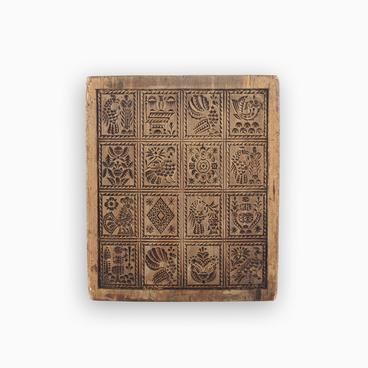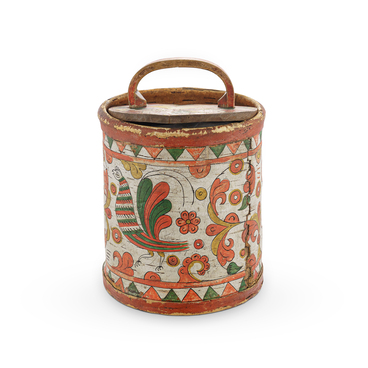A distaff used to be a mandatory item in the everyday life of women from childhood to old age.
Distaffs could be made from a single solid tree with roots, or they could be composite when the base and the vertical part were made separately and then attached together.
Distaffs consisted of a base, a leg and a blade (a comb). The side tips of the blades were cut in a shape that was more convenient to attach the tow — flax, hemp or wool fibers prepared for spinning. The tow was fixed at a convenient height with a cord. When spinning, the craftswoman sat on the base. With her left hand she pulled and twisted the fiber into a thread, and with her right hand she wound it on a spindle.
Girls in a peasant family started spinning early — from the age of five or seven. First, they spun threads on a distaff, in order to then weave cloths for towels, shirts and sundresses — to prepare their dowry for the wedding.
The first distaff was given to the girl by her father. The ancient Russians had a belief that the first thread spun by a child was endowed with special power: it was often burned and the remnants were put in a cup with water, the girl would then drink this water, so that diligence and skill would remain with her for many years, as spinning was a necessary skill of any Russian woman.
A small distaff presented in the Museum of Russian Heritage is a children’s version, covered with polychrome painting. The base was made of a solid piece of hardwood — probably the part at the roots. The blade and the leg are covered with a layer of painting on all sides. The upper part and the sides of the base are painted. There is a thin layer of light gray primer under the painting.
The blade is decorated with carved elements (toothlike edges and earrings) of medium size.
The transition to the leg is made in the form of a decorative red “swallow tail”. The right and left tips are carved. The leg is made in the form of a figured column (balusters). Probably, in the course of its use, the leg and blade were fastened with mastic and two metal nails.
The item was restored by the expert in polychrome
wooden sculpture and decorative carving A.V. Ponomaryov.


